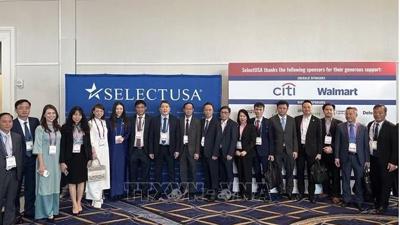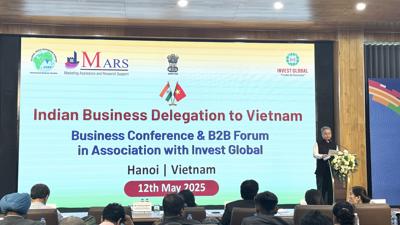PwC Vietnam: Embracing digital solutions is key to Vietnam’s tax future
PwC’s recent Tax and Legal Conference highlights how technology is transforming and will continue to transform Vietnam’s tax landscape.

In his address to PwC’s annual Tax and Legal Conference, Mr. Nguyen Thanh Trung, Leader of PwC’s Tax and Legal Practice in Vietnam, highlighted how technology is reshaping tax management in the country, promoting greater transparency and compliance. “The adoption of advanced data analytics and digital tools is essential for efficient tax administration and fraud prevention,” he explained. “As businesses navigate these changes, it is crucial to stay informed and effectively adapt to new regulatory landscapes.”
Vietnam’s rapid digital transformation is reshaping its economy, with over 78 million internet users accounting for nearly 80 per cent of its population. The digital economy is projected to reach $43 billion by 2025, nearly double from $21 billion in 2021. This transformation is significantly impacting various sectors, including tax management, where almost 1 million enterprises and 27 million individuals have taxable income.
Tax regime enhanced with digital solutions
In response to the digital surge, Vietnam has introduced substantial regulatory changes, including new rules on e-commerce, e-invoices, and personal data protection. Tax authorities are leveraging advanced data analytics and digital tools to boost tax management efficiency, minimize budget losses, and increase transparency. For instance, the General Department of Taxation is deploying a digital map of business households and operating a data analysis system along with an electronic invoice (e-invoice) management system based on digital analytics. These initiatives aim to enhance tax management, control invoices, prevent tax refund fraud, and detect other types of fraud more quickly.
Global technological trends shaping taxation
Globally, technology is transforming tax practices, as seen in the OECD’s Base Erosion and Profit Shifting (BEPS) project’s two-pillar initiatives. Pillar Two, the Global Minimum Tax, seeks to reduce tax avoidance by ensuring multinational enterprises pay a minimum tax level regardless of their base of operations; marking a major shift in global tax regulations. To comply with these rules, companies must disclose their global income and taxes paid. Advanced technological tools are essential here, meticulously tracking and analyzing complex financial transactions to ensure accurate profit reporting and taxation in line with these global standards.
Developing a roadmap for technology investment
To adapt to these changes, companies need a clear technology investment roadmap. This may include stages like automated data management, robotic process automation, analytic process automation, and digital tools. For instance, models for handling Pillar Two rules and draft disclosures can assist in automating document creation, producing initial drafts for tax professionals to review and finalize.
Upskilling staff to leverage new technologies
Companies must invest in upskilling their staff to fully leverage new technologies. Training employees to use advanced data-driven tools ensures that the workforce can adapt to and maximize the benefits of technological advancements.
Aligning tax functions with business goals and ESG principles
For successful technological adoption, alignment between tax departments and the C-suite is essential. This synergy ensures that data-driven technologies are utilized effectively, regulations are carefully followed, and resources are optimally allocated. By integrating tax functions with broader business objectives, companies can achieve greater operational coherence and success.
Incorporating environmental, social, and governance (ESG) principles into tax strategies is also increasingly important. Transparency mandates now require that businesses align their tax practices with ESG commitments, both to avoid penalties and to capitalize on tax incentives. This approach not only enhances regulatory compliance but also supports a sustainable, socially-responsible business model.
Balancing technology with human expertise
Technology complements rather than replaces the workforce, saving time and increasing efficiency. Digital tools are meant to support human effort, streamlining processes and enhancing productivity. However, human expertise remains crucial for interpreting and validating the outputs generated by advanced technologies. By balancing technological advancements with human insight, businesses can take a more effective, accurate approach to tax management and other critical functions.
In conclusion, the future of tax management in Vietnam looks promising, bolstered by technology. These advancements are transforming how businesses comply with regulations and manage tax liabilities and reporting. Embracing technology is essential to ensuring transparency, efficiency, and strategic alignment with broader business goals in Vietnam’s evolving tax landscape.







